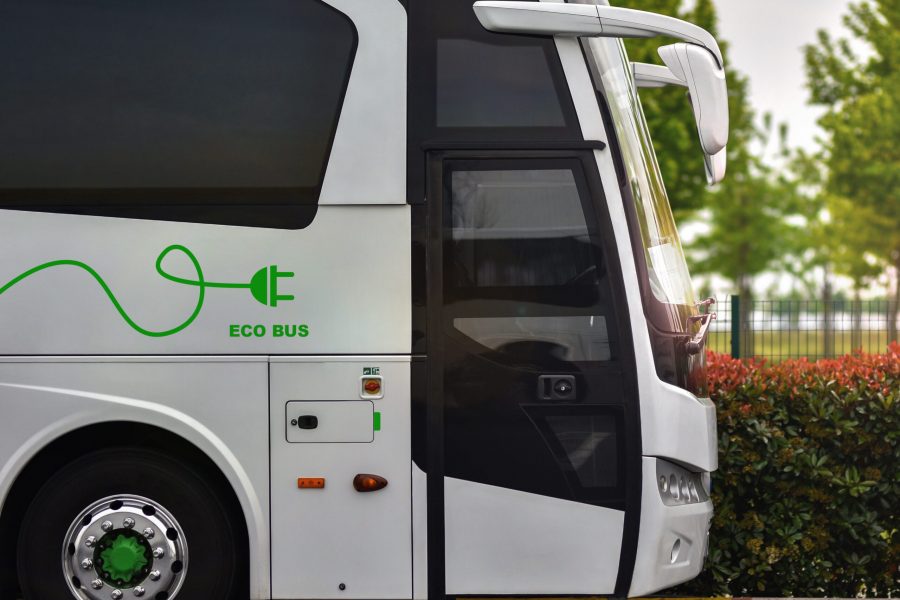The wheels on the bus go ‘round and ‘round but it’s not a smooth ride when the powerplant is a battery. Proterra, the Burlingame, California, company that makes electric buses as well as large trucks, vans and components for other manufacturers, has filed for bankruptcy. Just as Barack Obama hyped and funded solar panel maker Solyndra before it failed, President Joe Biden promoted the company in 2021, declaring that it was “getting us in the game.” He also forgave its $10 million COVD-aid loan.
Unlike Solyndra, which lasted only six years, Proterra is not a new company. It’s been around for almost two decades. It’s considered “an early pioneer in the commercial electric vehicle industry.” Just two years ago, it was expanding. The company took in federal EV funding, COVID aid, had hundreds of millions in cash, and was producing “very meaningful revenue.”
Yet it has been dragged down by the EV anchor, failing “to turn a profit on its core electric bus manufacturing operations, as well as the drivetrain, battery and EV charger businesses it launched over the past five years,” Canary Media reports.
In fact, it loses money on every electric bus it sells. That segment of its business has been pulling down Proterra’s other operations due to in part the capital intensity required to build electric vehicles.
That’s not an isolated occurrence. Ford loses more than $66,000 for each EV it sells. Other EV makers are finding that consumers aren’t interested in their automobiles. Korean luxury brand Genesis only a few weeks ago had nearly a year’s worth of unsold EV inventory on hand.
Given the facts, it would be safe to assume that the popularity of EVs is not what their peddlers (politicians and activists) expected, or rather hoped, it would be. Yes, Teslas remain in demand but that can be explained in part by the appeal of their technology and infotainment systems. BYD sales are hard to ignore – the company set a record in June – but not hard to explain: the Chinese government has propped “up both the supply of EVs and the demand for them.”
Maybe the truths about EVs are finally running them down. They’re no more eco-friendly than internal-combustion vehicles, and might be less so. They don’t have tailpipes, but, with some exceptions, their batteries are charged from power generated by plants that burn natural gas and coal, and emit the same greenhouse gases that a hi-test guzzling Big Detroit V8 does. The carbon footprint of EV production is larger than the carbon footprint left behind by the manufacture of conventional cars. The mining needed for the components in their batteries is a dirty business.
We also know that EVs are affordable only to those whose incomes are upper middle class and higher. Meanwhile, prospective buyers might also be disturbed by the potential that one day they might be required to return power from their charged batteries to the grid when demand threatens to outstrip supply. (San Diego already “has a pilot program with school buses using bi-directional charging that feeds into the grid at the end of the day,” says the local media.)
EV fires are becoming a concern, as well. (John Hinderaker of Power Line rightly insists that “those who are trying to force” EVs “down our throats should be made to explain why this isn’t a serious issue.”)
If consumers are noticing EVs’ many flaws, then it’s reasonable to believe that the public officials who make purchases for transit systems are paying attention, too. They are seeing what Diana Furchtgott-Roth, director of the Center for Energy, Climate, and Environment at the Heritage Foundation and an adjunct professor of transportation economics at George Washington University, describes as “the nuts and bolts” of the details and complexities presented by an electric bus fleet. There are a number of instances across the country in which electric buses are simply “gathering dust” rather than hauling passengers due to their poor performance, mechanical problems and battery troubles.
Rather than reaching decisions in haste to push a narrative, policymakers need to slow down and consider the consequences of their actions. This is especially true in California, where judgment has been replaced by a reckless, thought-free agenda.
Kerry Jackson is a fellow with the Center for California Reform at the Pacific Research Institute.


